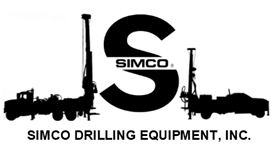In this installment of the SIMCO safety series, we’ll be covering steps to take before rig-up and drilling can begin to keep your crew and equipment safe on the job.

While knowing your immediate surroundings is imperative for drilling operation safety, it’s even more important to prepare before even arriving on-site. Proper location inspections and site surveys should be done in advance to start of the project. From clearing spaces overhead and around the drill site to properly inspecting what you can’t see – underground – brings ease of mind for operators and site managers alike.
One resource that makes safety inspection of drilling sites easier is contacting the 811 National call-before-you-dig phone number. This should be done up to two weeks before the drilling begins so the 811 team can locate and mark buried utilities. Once notified, the 811 team will map out the drilling site and mark, with paint or flags, the locations of underground lines for electricity, water, sewage and more. Additional information about the 811 service can be found at their Web site: https://call811.com/
Once the site has been pre-inspected for possible underground dangers, the crew can take the following steps to further secure the site:
- Before moving the equipment onto the site, crews need to look for tree limbs, awnings, power lines or overhanging roof eaves that could be damaged or cause damage to the rig when raising the hoist lines or the mast.
- Double check the site for unmarked utilities or subsurface structures, looking for indicators like manholes, sprinkler system boxes, telephone pedestals, and sunken ditches.
- The crew should determine the best path to drive the rig to the hole location and walk the route looking for hazardous terrain. Examples include tree stumps, soft spots, boulders, or above-ground wires.
It is the responsibility of the drilling crew to identify and manage any and all hazards before moving the rig into position. With proper personal protective equipment (PPE) on all personnel, positioning the drill and the rig-up can proceed and your crew can focus on the job at hand.
As quoted in the NDA Tailgate Safety Tips, “A few minutes assessing the site prior to drilling can save hours of frustration and production delays. It can also prevent damage claims and injury to personnel.”



